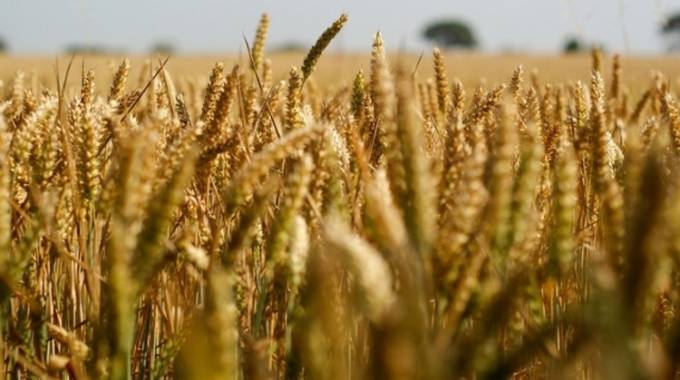Source: Big target for winter wheat | The Sunday Mail

Rudo Mandiro
Zimbabwe has set an ambitious target of 85 000 hectares under irrigated winter wheat this season, with expected national harvest forecast of above 400 000 tonnes.
The target, under the Smart Agriculture Programme, follows years of reduced output that has triggered a deliberate Government drive to finance and improve local wheat production.
Zimbabwe has been angling for maximum agriculture production with President Emmerson Mnangagwa emphasising agriculture mechanisation and modernisation.
Lands, Agriculture, Water and Rural Resettlement Deputy Minister Vangelis Haritatos told The Sunday Mail that at least 70 000 hectares, of the targeted total land under wheat production this year, would be financed by Government after securing a financial package from a local bank.
“The Smart Agriculture Programme has targeted 70 000 hectares under wheat this year, whilst the private sector, through contract farming, has targeted an additional 15 000 hectares,” he said
“The three major private players are Northern Farming, Staywell and PH.
“On a total hectarage of 85 000, we should be able to realise between 340 000 and 425 000 tonnes of wheat.”
The targeted harvest is envisaged to reduce the country’s reliance on imports.
Zimbabwe require around 500 000 tonnes of wheat annually.
Over the years, wheat production has decreased, with figures showing that in 2017 farmers produced 186 200 tonnes which dropped to 160 600 in 2018 before falling to 100 000 tonnes last year.
Deputy Minister Haritatos said Government was working with local financial institutions to extend funding towards wheat production.
“This year, CBZ will be financing the winter wheat crop. We have been engaging them for several months now to ensure that there will be timeous distribution of inputs to our farmers,” he said.
“We expect most of our farmers to be ready to plant by the first week of May.”
The deputy minister added that fertiliser companies had indicated availability of chemicals to meet local demand.
“Fertiliser, chemical houses and seed houses have confirmed that they are ready to supply and are fully capacitated as long as payment modalities are in place,” said Deputy Minister Haritatos
He said his ministry had engaged that of Energy and Power Development to ensure the availability of electricity to farmers during the winter season.
Previously, electricity cuts have dampened the prospects for irrigated wheat production as the country battles power shortages.
Deputy Minister Haritatos added that Government was planning to establish more irrigation facilities countrywide to boost food security.
The plan was in line with ongoing agriculture development programmes including National Irrigation Rehabilitation and Development Programme, Smallholder Revitalisation Programme (SIRP), More Food Programme Phase 2, Maka Resources, and the ongoing Pedstock facility.
Agriculture is the main pillar of Zimbabwe’s economy and is regarded as the prime mover of the Second Republic’s vision of making the country an upper-middle income economy by2030 .
COMMENTS